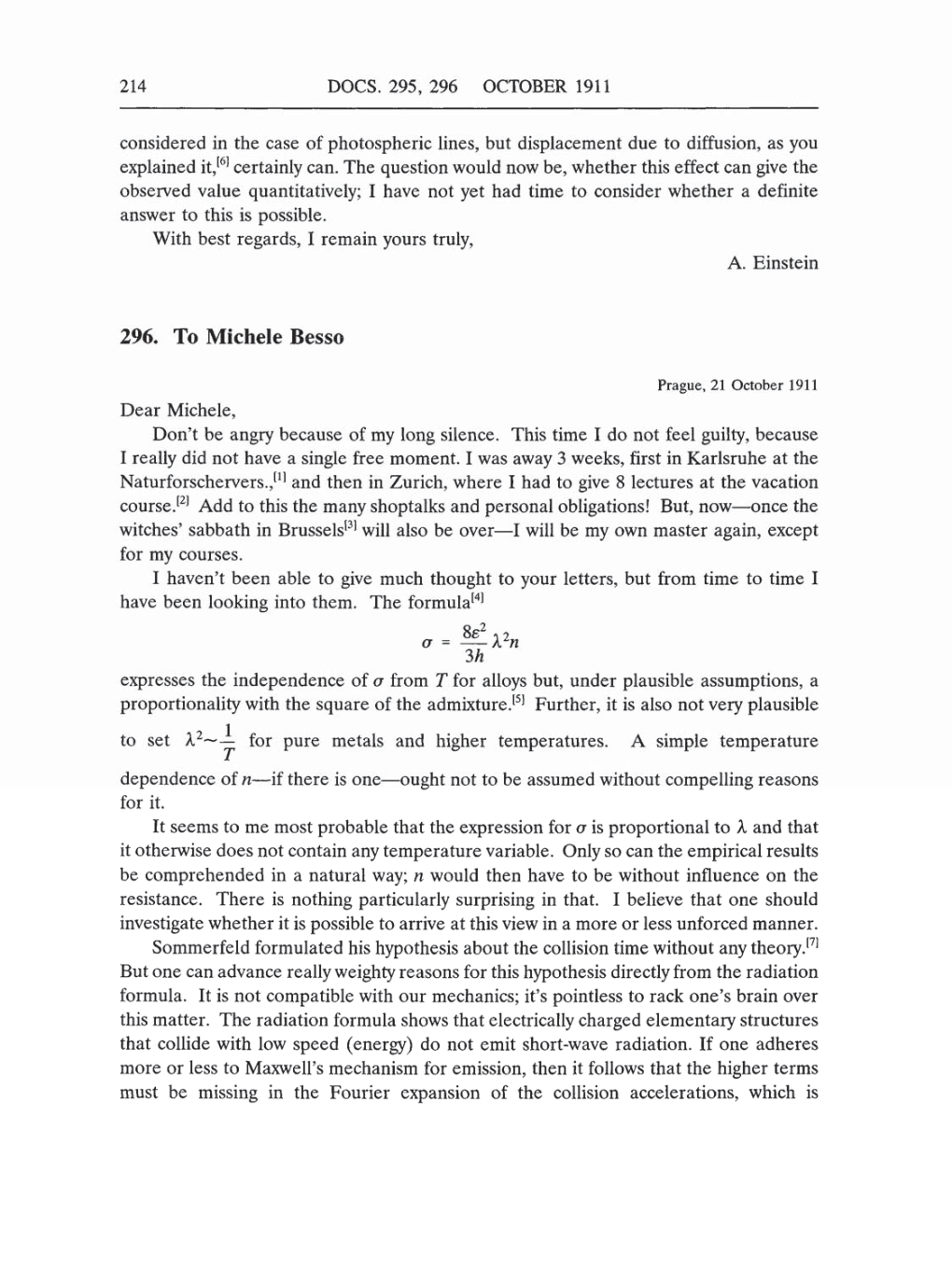214
DOCS.
295,
296 OCTOBER
1911
considered
in
the
case
of
photospheric lines,
but
displacement
due
to diffusion,
as
you
explained
it,[6]
certainly
can.
The
question
would
now
be,
whether
this effect
can give
the
observed value
quantitatively;
I have not
yet
had
time to
consider whether
a
definite
answer
to this is
possible.
With
best
regards,
I
remain
yours truly,
A.
Einstein
296. To Michele
Besso
Prague, 21
October
1911
Dear
Michele,
Don't
be
angry
because of
my long
silence. This time I do not feel
guilty,
because
I
really
did
not
have
a
single
free
moment. I
was
away 3
weeks,
first in
Karlsruhe
at
the
Naturforschervers.,[1]
and
then
in
Zurich,
where
I
had
to
give
8
lectures
at
the vacation
course.[2]
Add
to this
the
many
shoptalks
and
personal obligations! But, now-once
the
witches'
sabbath
in
Brussels[3] will also be
over-I
will be
my own
master
again, except
for
my courses.
I
haven't been
able
to
give
much
thought
to
your
letters,
but
from time to time I
have
been
looking
into them.
The
formula[4]
a
=
82
3h
2n
expresses
the
independence
of
a
from T for
alloys
but,
under
plausible
assumptions,
a
proportionality
with
the
square
of
the admixture.[5]
Further,
it
is
also
not
very
plausible
to set
X2_1T
for
pure
metals and
higher temperatures.
A
simple
temperature
dependence
of n-if
there
is
one-ought
not to
be
assumed without
compelling
reasons
for
it.
It
seems
to
me
most probable
that the
expression
for
a
is proportional to
X
and
that
it otherwise
does
not
contain
any
temperature
variable.
Only
so
can
the
empirical
results
be
comprehended
in
a
natural
way; n
would
then
have to be
without influence
on
the
resistance.
There
is nothing particularly
surprising
in
that.
I believe
that
one
should
investigate
whether it
is
possible
to arrive at this view in
a
more
or
less
unforced
manner.
Sommerfeld formulated
his
hypothesis
about the
collision time
without
any
theory.[7]
But
one can
advance
really weighty
reasons
for
this
hypothesis directly
from
the radiation
formula. It
is not
compatible
with
our
mechanics;
it's
pointless to
rack one's brain
over
this matter.
The radiation formula
shows
that
electrically
charged
elementary
structures
that
collide with low
speed
(energy)
do not
emit
short-wave
radiation. If
one
adheres
more
or
less to
Maxwell's
mechanism
for
emission,
then
it follows
that the
higher
terms
must be
missing
in
the Fourier
expansion
of
the
collision
accelerations,
which
is
